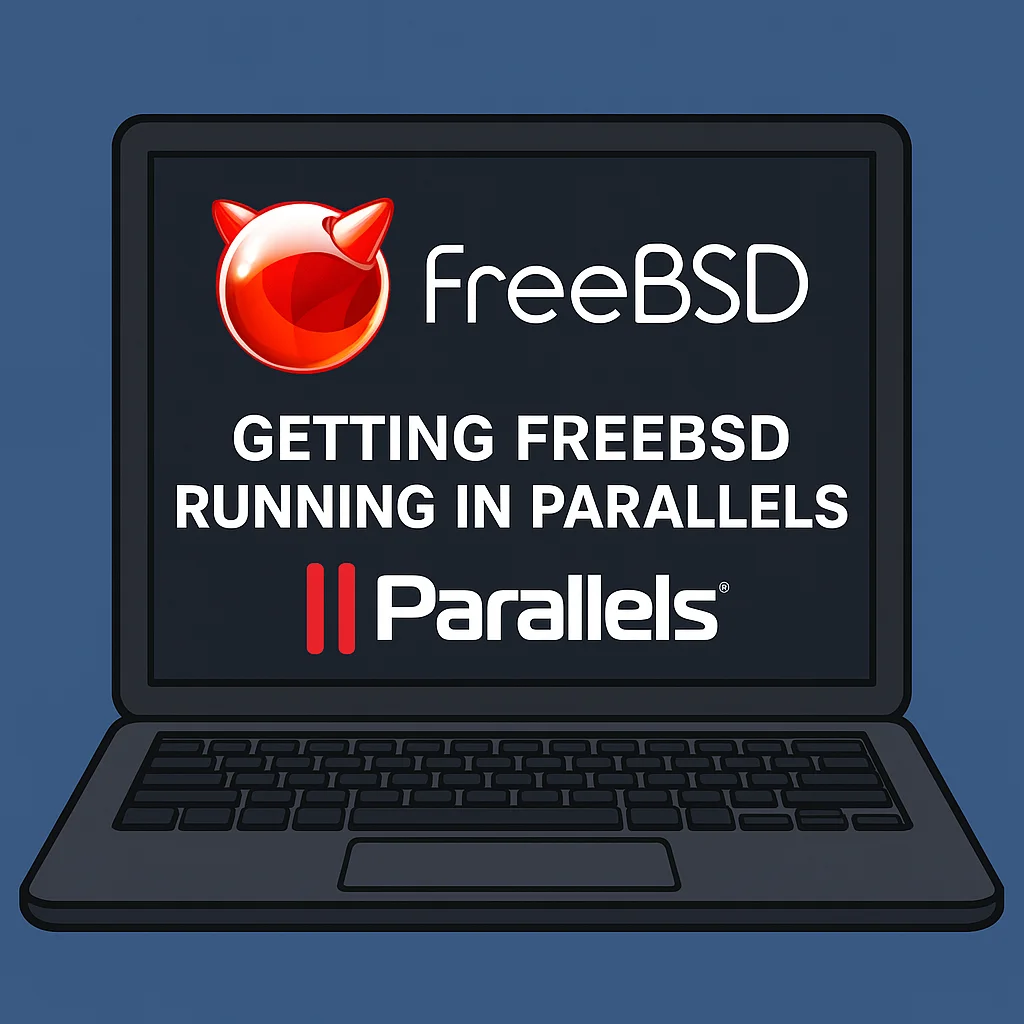
FreeBSD 14.3 on Parallels 26
Getting FreeBSD 14.3 running on Parallels 26 was a bit of a challenge. Here are the steps I took to get it working:
At Conrad Research, we're always looking for new ways to improve our development environment. One of the things I've been wanting to do is to get FreeBSD running on Parallels so that we can have one virtualization platform for both of our non-MacOS development environments:
- Windows (for building and testing Windows applications)
- FreeBSD (for testing and developing against our production server environment)
Obviously, Windows on Parallels works like a charm out of the box, but FreeBSD on Parallels was a bit of a challenge. Here are the steps I took to get it working.
Disclaimer: Yes, I'm fully aware of Docker. It's a great platform, but we don't actually use it in production. We'll post more about our deployment process in the future.
Steps
-
Download the FreeBSD boot-only ISO:
- Go to https://download.freebsd.org/releases/arm64/aarch64/ISO-IMAGES/14.3/
- Download FreeBSD-14.3-RELEASE-arm64-aarch64-bootonly.iso
-
Set up a new Parallels VM:
- Click "New VM"
- Choose the downloaded ISO as the boot media
- Important: Select "Other Linux" (not "Other") as the OS type
-
Configure VM CPU & Memory settings:
- Open VM settings > CPU & Memory > Advanced
- Enable both "Adaptive Hypervisor" and "Enable Nested Virtualization"
NOTE: If you're planning on using ZFS for your file system you should allocate at least 8GB of memory to the VM.
-
Modify video settings:
- Navigate to your Parallels VM file on your hard drive (default: ~/Parallels)
- Select the VM and right click on "Show Package Contents"
- Open config.pvs in a text editor
- Find the 'video' section
- Change 1 to 0
NOTE: Type 1 is VirtIO GPU (which will cause the system to halt when loading the video driver). Type 0 is the Parallels Video Driver (a more stable option for FreeBSD).
-
Now you're ready to boot the VM. IMPORTANT: Select option 3 from the boot menu to access boot loader options. At the loader prompt, enter the below commands. Without doing this, the CPU will peg to 100% at idle due to interrupt overhead.
set kern.hz=100 set debug.acpi.disabled="ged" boot -
The FreeBSD installer will now start. Follow the prompts to install.
-
At the end of the install select 'yes' to log into the machine to do manual configuration before reboot. Then run the following commands to persist the boot loader options we used during boot of the installer.
echo "kern.hz=100" >> /boot/loader.conf echo "debug.acpi.disabled=\"ged\"" >> /boot/loader.conf exit
Reboot the machine and you should be good to go with running FreeBSD 14.3 on Parallels 26!
BONUS: Friendly reminder to always run the following after a fresh install from an ISO to make sure your system has the latest patches.
freebsd-update fetch && freebsd-update install
Cheers 🥂
